What do we know empirically 1 about the universe?
Galactic collisions: Collision of the Milky Way Galaxy with Andromeda (forming "Milkomeda")
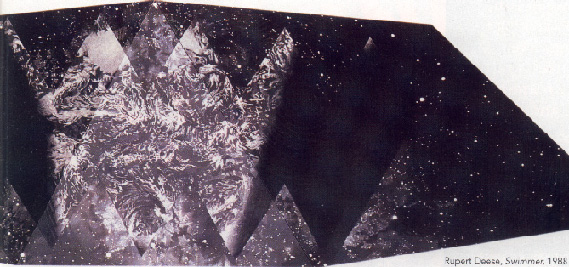 Frank Wilczek,
Frank Wilczek,
Theoretical Physicist
Strong Interaction, 2002 (UCSB)
Nobel Prize winner
Princeton PhD.
The
"W" map of the visible universe as a composite image of photographic
plate exposures.
The age of the universe is 13.77 billion years.

Start
Basics:
1) all subatomic bodies move (oscillate), 2) the speed of light is 186,000 miles/second, 3) at the speed of light time ceases, 4) there are fundamental forces at work in the observed universe. 5) We live in a "low energy" or small energy and relatively large mass condition when compared to even large atomic elements.
M. I. T. Lecture
The Universe is a Strange Place
In quantum mechanics atoms appear as actual musical (resonate) instruments
Bohr's models of an atom possesses "frequencies of emitted light"
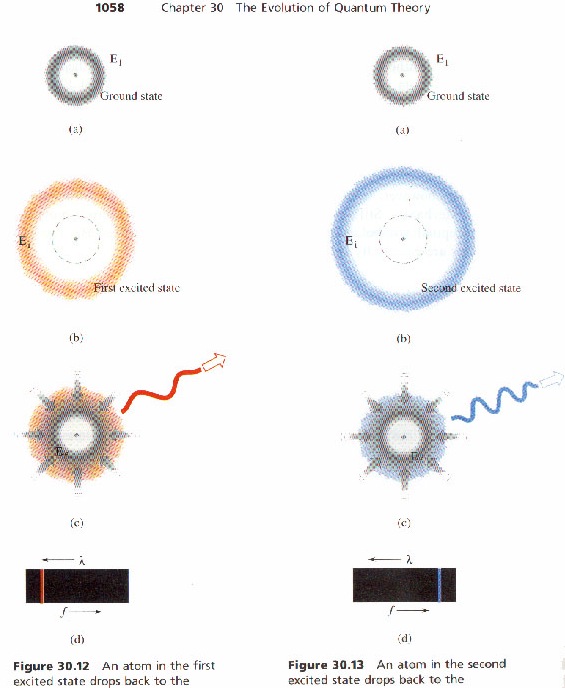
"highest form of musicality in the realm of physical thought" Einstein about Bohr's equation referring to the "frequencies of emitted light"
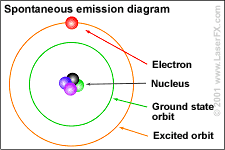
Bohr's formulas for the light quantum were not unlike formulas for the emission of sounds made by musical instruments.
Next
Matter
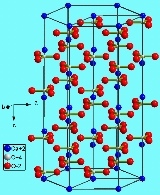
electron and proton fields
"Its really fields"

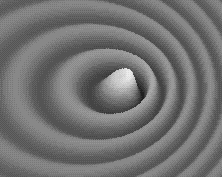
"spread out object or wave patterns are electrons -- not points"
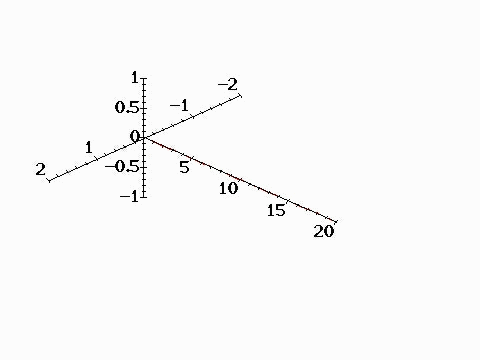
Nuclei (1930s)
| The extent of knowledge before Fermi's experiments. |
| Charge |
+
|
– |
| |
 |
| |
| particle |
proton
|
electron |
| |
baryon
|
lepton |
See: Fermi Lab's "What is the World made of?"
Next
Breakthroughs in the mathematical comprehension of the structure of nuclei came during the 1960s.
Nucleons
 Neutron
Neutron 
Quarks and gluons are a more elaborate version of electrons and photons {in fact, no one knows how small quarks are} Fermilab
quarks (comprise mesons and hadrons or protons and neutrons) & gluons (bind together the quarks)
 Proton
Proton
You do not get a determinate result from the same input.
Next

Quantum mechanics | Quantum field theory | What it means | scales | Cosmology | lessons

 The character of quantum mechanics
The character of quantum mechanics
(Modern atomic, subatomic, & nuclear physics)
Contemporary physical science is mathematically and experimentally based on understanding very small manifestations at extraordinarily high speeds. This is a study of an extraordinary realm where motion and forces act in ways to which we are unfamiliar. So unfamiliar are these smallest of spaces that even Albert Einstein was baffled by the counterintuitive and aberrational qualities of atoms and their peculiar parts. The scale of quantum theory is the atomic scale measured in nanometers and is called the microcosm or femto universe because femto means a unit of measurement characterized by 10-15 meters.
The behavior of residual parts of these extremely small spaces is not at all what one would expect given our experience of the motion of bodies on earth and in outer space. So wrote Abraham Pais, Einstein's biographer.
"Einstein dissented. To him, who considered relativity theory no revolution at all, the quantum theory was still in a state of revolution and –as he saw it– remained so for the rest of his life (1955); according to him the old did not yet fit in properly."
Pais further adds that of the four oldest equations attributed to quantum theory that "Every one of these successes was a slap in the face of hallowed classical concepts. New inner frontiers, unexpected contraventions of accepted knowledge, appeared in several places; . . . electrons appeared to be revolving in closed orbits without emitting radiation."
Abraham Pais, Subtle is the Lord. (Oxford: Oxford University Press, 1982). pp. 29-30.
As Frank Wilczek states:
 "They are conglomerates, (not single particles) of smaller units that exchange energy in small, but discrete --meaning separable and not continuous-- amounts that we see as frequencies on the electromagnetic spectrum."
"They are conglomerates, (not single particles) of smaller units that exchange energy in small, but discrete --meaning separable and not continuous-- amounts that we see as frequencies on the electromagnetic spectrum."
Asymptotic freedom (What he received the Nobel Prize in physics for based on his graduate work.)
"imprints as energy momentum in jets" (emitted from electron - positron annihilation). This electron - positron annihilation in a super
collider, such as those like Fermilab or CERN: The European Council for Nuclear Research. (CERN in French: Conseil Européen pour la Recherche Nucléaire ).
Radiation events of a high energy are rare
small transfers of energy and momentum are quite common
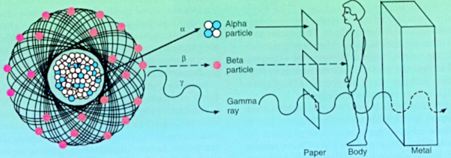 We see the basic interactions in these annihilation and that there are quarks and gluons and they
interact as the mathematical theory exists.
We see the basic interactions in these annihilation and that there are quarks and gluons and they
interact as the mathematical theory exists.
Wilczeck says there is NEED for CLARITY with respect to radiation.
Einstein's First Law
E = MC2
Einstein's Second Law
M = E / c2
(This actual equation he used in his drafts)
Mass is equal to Energy divided by the speed of light squared.
What is energy?
Does the inertia of a body depend on its energy?
Next
Quantum mechanics | Quantum field theory | What it means | scales | Cosmology | lessons

QUANTUM FIELD THEORY
"Empty space is in reality a wildly dynamical medium" -- filled with vibrating particles and waves of radiant emissions and absorption of subatomic particles.
Space is really a very " dynamical medium that interacts with its constituent part(icles)s."
energy fluctuates
you can borrow energy for very brief moments
"Beware of thinking there is nothing there" in so called empty space, where at the quantum level there is a seething activity of energy in motion.
Quantum Electrodynamics or QED, says there is dynamical vacuum in constant flux -- eternal movement
This QED formulation relates to the accounting for the mass of particles.
What do your eyes observe here in this photograph above?
Next
Quantum mechanics | Quantum field theory | What it means | scales | Cosmology | lessons

QCD
Quantum Chromo dynamics
Mass corresponds to energy
Albert Einstein
different particles correspond to different vibration patterns in space
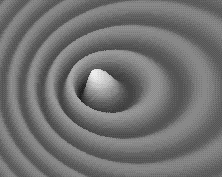 "stable particles" are vibration patterns
"stable particles" are vibration patterns
with "a particularly long life-time"
that occur in a dynamical void
M=E/ c2 = hv/c2 = <> V = Mc2/h
 "every mass is associated with a corresponding frequency"
"every mass is associated with a corresponding frequency"
Particles are the tones (frequencies) of these vibration patterns in the dynamical void
The "music of the spheres" is really the music of the void (actual, truth, testable and
mathematically ascertainable) in that subatomic entities are mathematically very much like instruments that resonate at a predictable range of frequencies.
Next

Quantum mechanics | Quantum field theory | What it means | scales | Cosmology | lessons

Certainty is a scale of ordinary expectations.
1. So there are some things that we know, for certain such as the four forces, or the Second Law of Thermodynamics, or natural selection, or Boyle's law.
2. Then there are things we are fairly certain about; such as the fact that the Southern Ocean Oscillation is a cycle of warm and cold water moving periodically across the Pacific Ocean from the Indian Ocean, or panthers and cheetahs do not show sufficient genetic variability to survive very many more generations.
3. And then, there are things we are less certain about such as dark matter and what happens to information in a "black hole."
But this empirical scale from certainty to uncertainty means that we can distinguish facts from phantasms.
Next.

Quantum mechanics | Quantum field theory | What it means | scales | Cosmology | lessons

At ever smaller scales the behavior of the universe is more and more probabilistic.
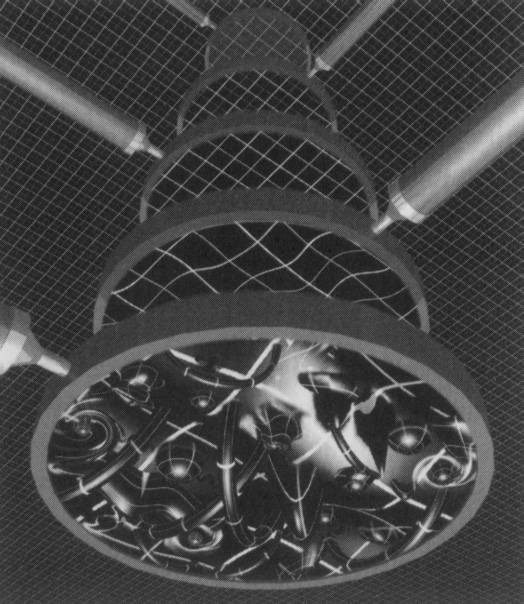 |
Our scale
atomic level
subatomic
quark
Planck scale |
| Subsequent smaller and smaller layers of the quantum order of things. |
Ever more minute levels of the microcosm |
Scale in science
Quark and the Jaguar
by Murray Gell-Mann
Electroweak force video by SciShow

Based on
OHMS Laws
V=IR

LESSONS:
"If we work to understand, then we can understand."
(free wheeling research --much of it unpromising -- vast effort internationally open & honest)
"The part of the world we understand is by any measure strange and beautiful."
That is ordinary matter -- using a educationist approach to analysis-- does reveal the basic properties of existence under "ordinary" conditions.
next

Cosmology is confusing:
Quarks and gluons [fields] (as was just described) ordinary matter is only 5% of the entire
Universe
25% is in Dark Matter (we don't know what it is -- it is transparent -- impervious to light and -
it clumps together but is impervious to neutrinos -- it is only detected by gravitational
disturbance
70% the mass is "dark energy" smooth exerts negative pressure and presses things apart on very
large scales
Frontiers of Symmetry
QED to QCD
• Unification -----Proton decay and super-symmetry (extra dimensions not just space and
time)
• Supersymmetry ----> World and Dark Matter
• QCD to axioms and dark matter
• weak force and the Higgs fields / particles
Most compelling and exciting idea
Hypothesis of Unification
Different kinds of interactions are described mathematically are similar:
• Electromagnetic
• strong
• weak
W & Z bosons when discovered were the evidence needed for unifying the electro-magnetic and weak nuclear forces in to a single powerful electro-weak force or Electroweak force.
"As time went on, scientists realized that the electromagnetic and weak nuclear forces were really one and the same force."
FermiLab
Read –>
https://www.fnal.gov/pub/inquiring/matter/madeof/electroweakforce.html
Hear –> https://www.youtube.com/watch?v=R_GlyRUIlkg
See –> https://www.youtube.com/watch?v=hyFYgMEiRpY
New findings
There is a barrier to our understanding these divergent forces as all manifestations of the same underlying force, but how do
they have different manifestations?
 √ unification seems to be a "non-starter"
√ unification seems to be a "non-starter"
√ Gravity almost works as well under Supersymmetry
"Gravity fits too! (Roughly)"
beautiful meaning works better than we could have anticipated it to work.
Gravity, unlike the other forces cannot be understood in the same mathematical manner as the electromagnetic, weak, and strong forces are understood.
Indeed, the quantum mechanical level of physics contradicts the behavior of bodies on a macroscopic scale that respond to gravity.

Source
Frank Wilczeck
Theoretical Physicist
MIT Lecture
Nobel Laureate Lecture Series
(Ford / MIT), March 2005

Three great lessons
1 if we work to understand we can understand
2 strange and beautiful is the world we do understand
3 We still have a lot to learn
Questions asked.

Quantum mechanics | Quantum field theory | What it means | scales | Cosmology | lessons

Q&A
 "the mass is the frequency itself?" Answer: "Yes."
"the mass is the frequency itself?" Answer: "Yes."
"Hard" rigorously tested facts
as hard as they get
masses really do correspond to frequencies
"We are children of light" in a scientific and not a theological sense
"happy that we can learn about it"
Gravitons (Questioner) if we detected them – what implications would they have?
BROADLY (FW):
experimental and astrophysical
detect gravitational waves might be possible and the estimates of their strength could be tested
(would be a new form of telescope to detect violent aspects of the universe and deeply penetrate
exploding stars)
gravitons would mean that gravity would behave very differently than we are able to predict.
Gravity waves are just too weakly interactive for us to detect now and for centuries to come.
Planck's constant
energy is related to frequency
when you have light, light is photons and the energy of the photon is related to the frequency of
the wave (light waves).
comparable to the light's frequency (vibrations)
The electron and the nuclei of atoms exchange energy.
----------------------------------------------------------------------------------------- ∞ ∞ ∞ ---------------------------------------------------------------------------------------
Einstein's favorite joke
- A man whose car will only start after a lot of effort (push)
- gets it to the mechanic's shop.
- None of the service people can fix it after examination of the car...
He tries other pros and eventually finds the 7th mechanic, who inspects the car and looks at its assembled parts
tightens the bolts and the car works!
The bill is $150.00
- How dare you charge me
- it took only 30 seconds!
- I want an itemized bill, so the Mechanic gives him one:
Itemized bill-
Invoice 447782
| Item |
Charge |
| Parts |
0 |
| |
|
| Labor |
.11¢ |
| Knowing which screw to turn |
$149.89 |
| |
|
| |
$150.00 |
|
-

Quantum mechanics | Quantum field theory | What it means | scales | Cosmology | lessons

CERN developed the WWW [World Wide Web codes] as a need to communicate among high energy physicists
by Tim Berners Lee
Pure research pays off in very unexpected ways, and can not be done always with an end in
mind!
Can you create a tiny black hole? Theoretical speculation says yes, in an accelerator
So small they would be very unstable and would decay quickly but they would act like
particles.
It could be catastrophic certainly, but it is not likely.
We are not as close to that as people think.
See:
Frank Wilczek, "QCD MADE SIMPLE." Physics Today, August, 2000. pp. 22-28
Quantum chromodynamics is conceptually simple. Its realization in nature, however, is usually very complex. But not always.
http://www.frankwilczek.com/Wilczek_Easy_Pieces/298_QCD_Made_Simple.pdf
Book review of Frank Wilczek's A Beautiful Question:
"It is common, but horrifying, to find popularisers and observers of science saying things of that sort in earnest – as if anything besides the latest True Theory of Everything is so much trash. It’s a lightweight version of the sort of thinking behind intolerant, totalitarian ideologies."
F. W.

Terms to  know:
know:
empirical is defined as being verified based on experience, experiment, or observations; hence verifiable by comprehending facts derived from observation, experiences, sensory impressions but verified by experimental evidence.

Descartes | Galileo
| Hooke | Newton
| Einstein | Gell-Mann
| Hawking | Kaku | Pacey | Capra
Science
index | more science pages | even
more science indexed!



Einstein's Cosmos
![]()












 T
T
 "stable particles" are vibration patterns
"stable particles" are vibration patterns
